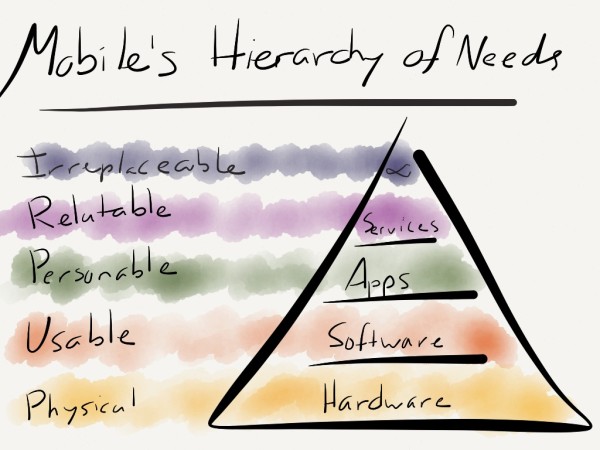BlackBerry – and Nokia’s – Fundamental Failing
BlackBerry – and Nokia’s – Fundamental Failing
In December 2009, while a first-year student at Kellogg, I went to a RIM (now BlackBerry 1 ) recruitment presentation.
“Our problem,” the relatively senior fellow said, “is that when I get on a plane, everyone uses a BlackBerry until they close the door. Then they pull out their iPods. We need to make BlackBerry’s the only device they need.”
Obviously, consumers ended up going in precisely the opposite direction, but the truth is that BlackBerry was already in major trouble.
Android 2.0 “Eclair” had launched two months previously, and a second app ecosystem was starting to take root, sealing BlackBerry’s fate as a standalone ecosystem. It wasn’t just BlackBerry; Nokia’s door to platform independence closed at the exact same time for the exact same reason: while the history of software ecosystems is not long, the maximum number of said ecosystems seems to be about 2, maybe 2.5. This has held true for the desktop, for consoles 2 , and now for mobile.
Still, that needn’t have been the end for BlackBerry, or Nokia for that matter. Both were viable enterprises in 2009 and into 2010. But then both made the exact same strategic error: they didn’t know what they were good at, and consequently threw their differentiation away.
I’ve used this graph multiple times on this blog, and for good reason: understanding and appreciating the entire stack is the foundation of any sort of coherent analysis.

Both BlackBerry and Nokia had significant strengths in this stack:
- BlackBerry had differentiated hardware – there are people who still swear by their keyboards – and highly differentiated services, including BlackBerry Enterprise Server and BlackBerry Messenger
- Nokia dominated all the parts of this stack you don’t see: they had, and in some respects, still have, the best supply chain and distribution network. In addition, they had high quality hardware that served every segment imaginable
Notably absent in these strengths is the OS and Apps. By 2009, BlackBerry OS and Symbian were clearly obsolete, and their app ecosystems, such as they were, were eclipsed by iOS and then Android. The problem, as I alluded to above, is that while the OS was ultimately under the control of BlackBerry and Nokia, respectively, and thus could be fixed, the efficacy of their ecosystem wasn’t, and wouldn’t be.
Building a healthy app ecosystem is probably the most difficult problem in technology, maybe in business:
- You need an API that can be built upon
- You need an OS that developers want to use
- You need consumers who are willing-to-pay
- You need a liquid marketplace
- You need to overcome the opportunity cost of developers working on other platforms
It’s the last one that is a killer to the 3rd and 4th ecosystem into a market, which, by 2009, both BlackBerry and Nokia were destined to have.
And so, by far the smartest strategic thing either could have done would have been to accept their weakness – they didn’t have an adequate OS or ecosystem – and focus on their strengths.
- BlackBerry should have adopted Android and made it enterprise-ready, with BBM for consumers. And, of course, those hardware keyboards
- Nokia should have adopted Android-stock, and used their unmatched supply chain and distribution to do to their competitors, well, exactly what Nokia had been doing to their competitors for the last decade (if you think Samsung is running roughshod over everyone today, in 2007 they could only manage 41 million phones compared to Nokia’s 110 million 3 ).
Both BlackBerry and Nokia would have gotten a good OS and thriving ecosystem for free and been able to compete and differentiate themselves on the exact same vectors they had previously. To put it another way, RIM and Nokia had never been successful because of their OS or ecosystem, yet both decided their best response to iOS and Android was to build a new OS! 4
In fact, the strategic superiority of the Android option for RIM and Nokia was even then so obvious that I suspect their core failing was not so much strategic as it was all-too-human: pride. Owning an ecosystem seems much more important than owning services or supply chains, even if building said ecosystem completely devalues what you’re actually good at ( this tweet captures the waste perfectly).
And so, for BlackBerry at least, today came the fall .
- This made writing this article very annoying; I went with BlackBerry throughout even though the pertinent decisions were made as RIM [ ↩ ]
- The Wii is the exception that proves the rule; it’s success rode almost entirely on Nintendo 1st-party software, particularly Wii Sports [ ↩ ]
- As an aside, a few months ago Stephen Elop came up with a new reason why Nokia was right to choose Windows Phone:
“I’m very happy with the decision we made,” he said. “What we were worried about a couple of years ago was the very high risk that one hardware manufacturer could come to dominate Android. We had a suspicion of who it might be, because of the resources available, the vertical integration, and we were respectful of the fact that we were quite late in making that decision. Many others were in that space already.
“Now fast forward to today and examine the Android ecosystem, and there’s a lot of good devices from many different companies, but one company has essentially now become the dominant player.”
This is revisionist bullshit of the first degree. Had Nokia gone with Android, and the result had been one dominant player, it very likely would have been Nokia. More likely it would have been Nokia in first, Samsung in second, and everyone else fighting over scraps. [ ↩ ]
</br> - Or, in Nokia’s case, licensed Windows Phone OS. Same difference, especially given the current Windows Phone OEM situation [ ↩ ]
文章版权归原作者所有。
